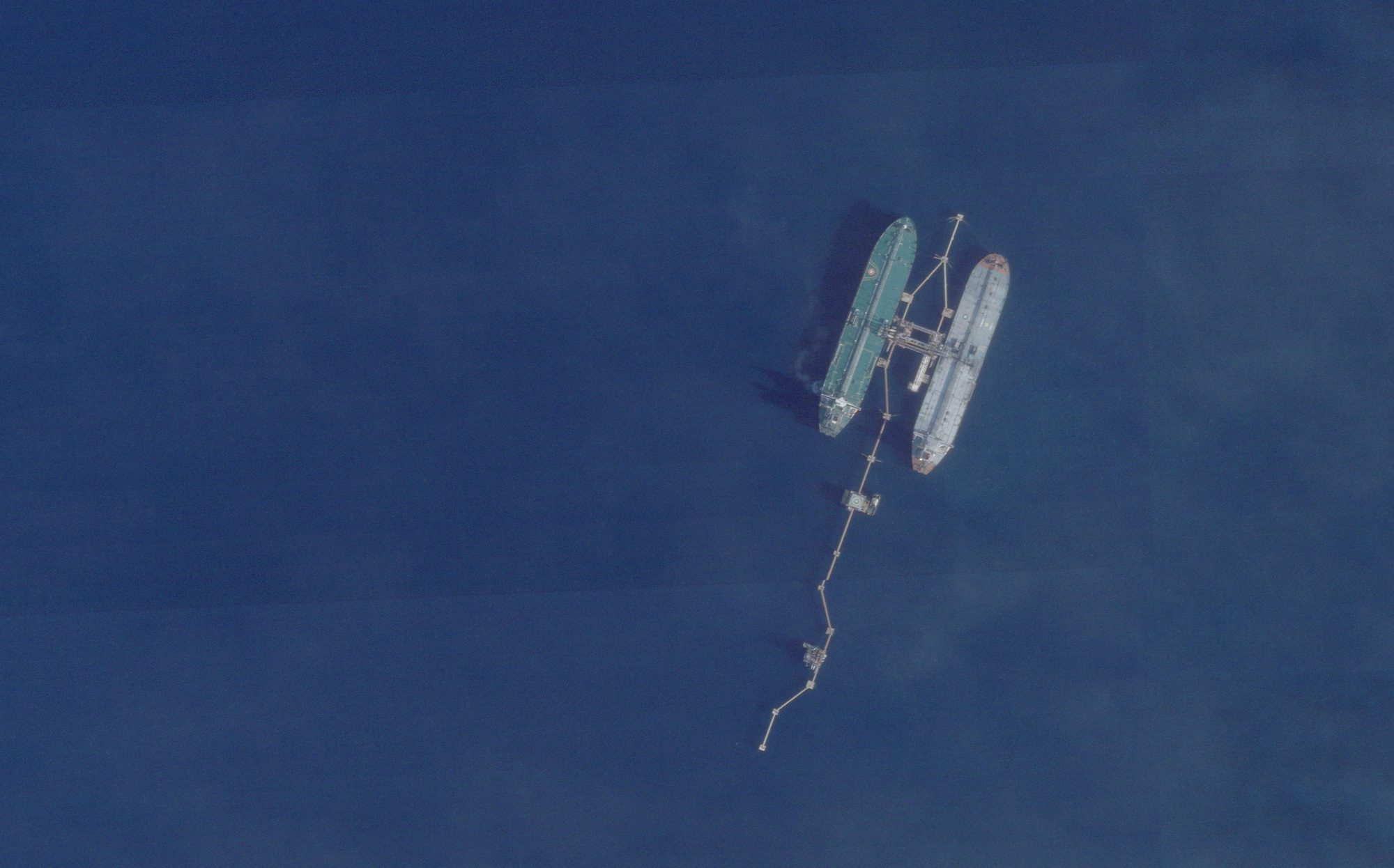(Bloomberg) —
For global leaders puzzling over how to negotiate with Donald Trump, the US president’s inaugural pact with the UK offers a few clues on how much ground he’s prepared to give.
Thursday’s announcement of their trade framework in the Oval Office shows Trump is willing to celebrate progress even without a final accord — a move that can buy political credit with the White House. There’s also evidence that American levies can be talked down, but that may not be much more of a template, according to analysts.
“If you thought you were going to have to have a real deal done in 90 days, you’ve now at least seen from the UK that that need not be true,” said Deborah Elms, head of trade policy at the Hinrich Foundation in Singapore. “You can have a sketch of an idea of a plan.”
The framework Trump greeted as a “breakthrough” will, he says, fast-track US items through UK customs and reduce barriers on “billions of dollars” of other exports. The British government meanwhile says tariffs on UK cars will drop to 10% and those on metals to zero. Final details need to be negotiated over coming weeks.
That extended cliffhanger requires caution on making conclusions. Trump’s insistence on preserving some proposed levies, his assent to specific carveouts, and the lack of any requirements regarding China are among highlights analysts point to.
But the US surplus with the UK, as well as their longstanding ties may mean this skirmish in the president’s trade war isn’t much of a guide for exporters such as Japan or the European Union engaging in negotiations of their own.
“You can’t be optimistic just because of the US-UK announcement,” said Hiroshi Namioka, chief strategist at T&D Asset Management in Tokyo. “The US doesn’t have a trade deficit with UK, so reaching a deal was easier.”
Asian countries such as Japan, Vietnam and South Korea that have large trade surpluses with the US have moved quickly to initiate talks, with few signs of progress.
Speaking shortly after the deal announcement, Commerce Secretary Howard Lutnick said negotiations with South Korea and Japan are taking “an enormous amount of time.” He added that India could be among the next countries to reach an agreement, while cautioning that work still needs to be done.
The EU is also making limited headway in its own engagement with the administration. That’s partly because of its sheer size, according to Sam Lowe, partner and head of international trade practice at Flint Global in London.
“Whereas the option of retaliation was not really available to the UK due to its much smaller economy, the EU can inflict some damage on the US via tariffs and other measures,” he said. “This potentially gives it more leverage, but also means any deal will probably take longer.”
One component of the UK accord that will be analyzed closely in auto-making hubs was the cut in tariffs on British cars to 10% from 27.5% for 100,000 vehicles per year.
Auto exports from Japan and South Korea to the US are each more than 10 times larger than those from the UK, and account for around one-third of their sales to America.
While the deal offers some encouragement that 25% levies on Japanese and Korean cars could be lowered, Tokyo insists on a complete removal.
“We’ll continue to seek a rethink of the string of tariff measures from the US,” Japan’s chief trade negotiator, Ryosei Akazawa, said on Friday.
Similarly, the UK agreement is unlikely to serve as a viable template in South Korea’s talks because of the importance of cars there too, said Hyosung Kwon of Bloomberg Economics.
“To secure lower US tariffs on autos, South Korea may need to make concessions such as increasing imports of US liquefied natural gas and easing non-tariff barriers on US agricultural products,” he said.
One way of looking at the US-UK agreement is that the 10% baseline levy applied to all countries by the US is largely fixed, some trade analysts said. The UK said it will keep trying to negotiate over that so-called “reciprocal tariff.”
For other countries including Australia and Singapore, it may be the case that there’s no real point in discussing going below the 10% level right now, said Elms at the Hinrich Foundation.
This is a modal window.
The media could not be loaded, either because the server or network failed or because the format is not supported.
In one exception, the UK was able to get US tariffs on steel and aluminum lowered to zero from 25% as part of what the US called “a new trading union.” It was not immediately clear how this agreement might affect US tariffs on the metals imposed on other countries.
The framework didn’t offer much insight into non-tariff barriers to trade including regulations and subsidies that US officials have highlighted. The UK said it wouldn’t loosen safety checks on food imports despite removing levies on beef and other agricultural products.
Some analysts also noted the lack of any reference to China in the US-UK framework despite indications given by US officials that they want help in efforts to pressure Beijing.
US and Chinese officials are set to meet in Switzerland this weekend for their first round of negotiations.
© 2025 Bloomberg L.P.

 Join The Club
Join The Club











